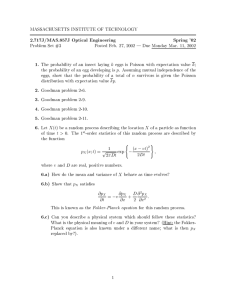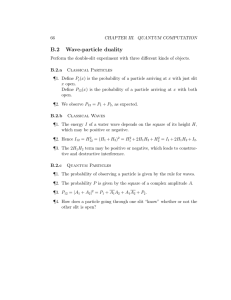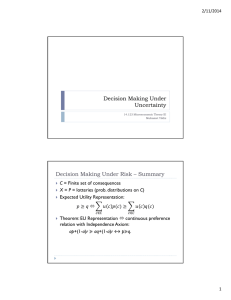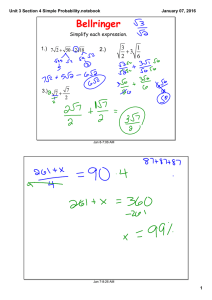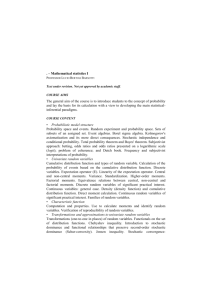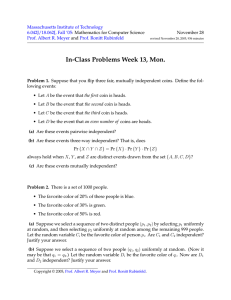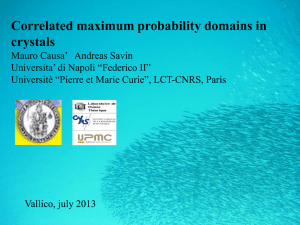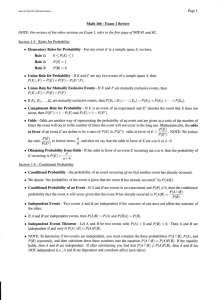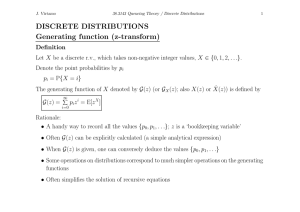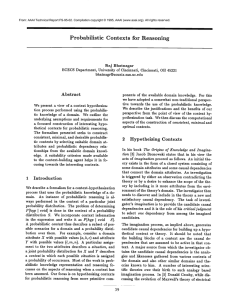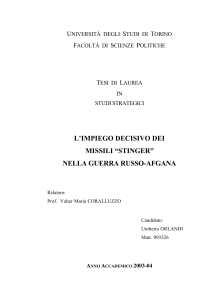TAKE HOME MIDTERM 17.872, Fall, 2003
advertisement
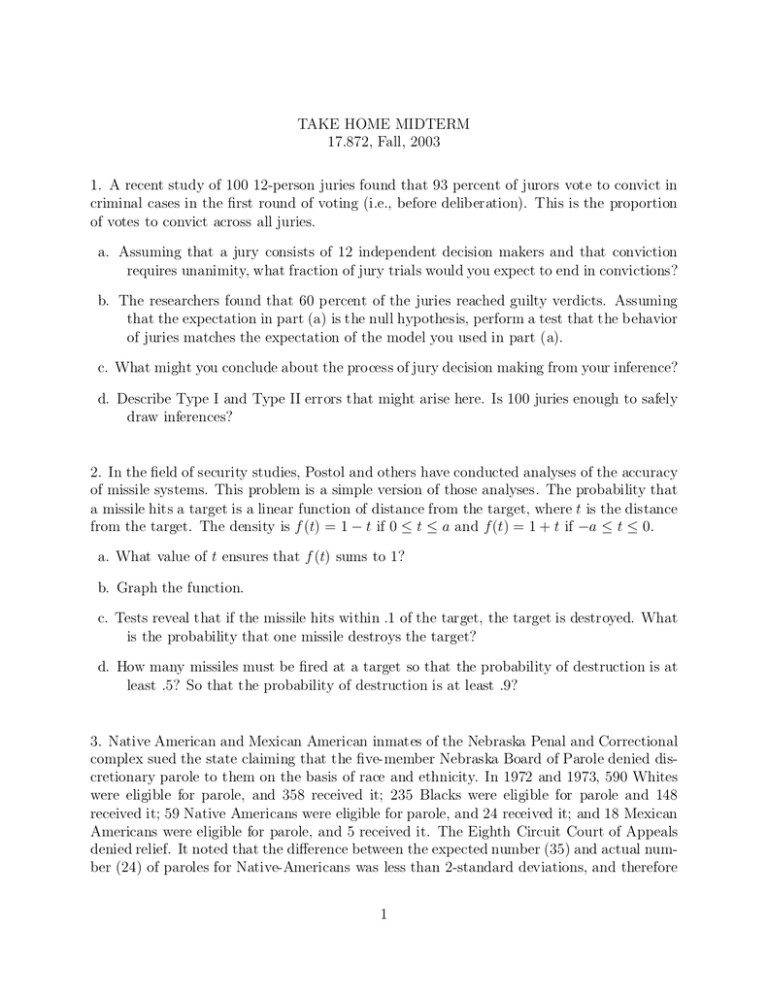
TAKE HOME MIDTERM 17.872, Fall, 2003 1. A recent study of 100 12-person juries found that 93 percent of jurors vote to convict in criminal cases in the ¯rst round of voting (i.e., before deliberation). This is the proportion of votes to convict across all juries. a. Assuming that a jury consists of 12 independent decision makers and that conviction requires unanimity, what fraction of jury trials would you expect to end in convictions? b. The researchers found that 60 percent of the juries reached guilty verdicts. Assuming that the expectation in part (a) is the null hypothesis, perform a test that the behavior of juries matches the expectation of the model you used in part (a). c. What might you conclude about the process of jury decision making from your inference? d. Describe Type I and Type II errors that might arise here. Is 100 juries enough to safely draw inferences? 2. In the ¯eld of security studies, Postol and others have conducted analyses of the accuracy of missile systems. This problem is a simple version of those analyses. The probability that a missile hits a target is a linear function of distance from the target, where t is the distance from the target. The density is f (t) = 1 ¡ t if 0 · t · a and f(t) = 1 + t if ¡a · t · 0. a. What value of t ensures that f (t) sums to 1? b. Graph the function. c. Tests reveal that if the missile hits within .1 of the target, the target is destroyed. What is the probability that one missile destroys the target? d. How many missiles must be ¯red at a target so that the probability of destruction is at least .5? So that the probability of destruction is at least .9? 3. Native American and Mexican American inmates of the Nebraska Penal and Correctional complex sued the state claiming that the ¯ve-member Nebraska Board of Parole denied discretionary parole to them on the basis of race and ethnicity. In 1972 and 1973, 590 Whites were eligible for parole, and 358 received it; 235 Blacks were eligible for parole and 148 received it; 59 Native Americans were eligible for parole, and 24 received it; and 18 Mexican Americans were eligible for parole, and 5 received it. The Eighth Circuit Court of Appeals denied relief. It noted that the di®erence between the expected number (35) and actual number (24) of paroles for Native-Americans was less than 2-standard deviations, and therefore 1 there was no statistical evidence of a disparate e®ect. The Court computed the standard deviation by taking the square roote of the product of the total number of individuals who received discretionary paroles (535), the probability of selecting a Native-American from the eligible inmate population (.056) and the probability of randomly selection someone other than a Native-American (.935). The result was 5.7. a. Use a chi-square test of the null hypothesis of no association between race or ethnicity and parole, against the alternative hypothesis of some di®erences among the groups' parole rates. b. What probability model underlies the court's computations? c. Conduct a Â2 test. What are the results? d. How is the small number of Native-Americans and Mexican-Americans in the inmate population a problem for the court? How might an adjustment improve the statistical inferences? 2
